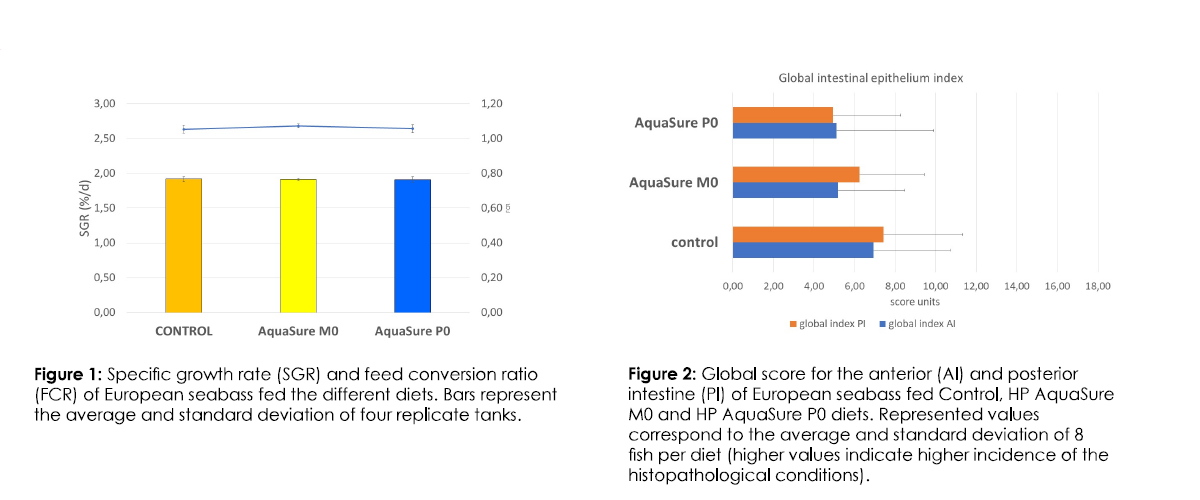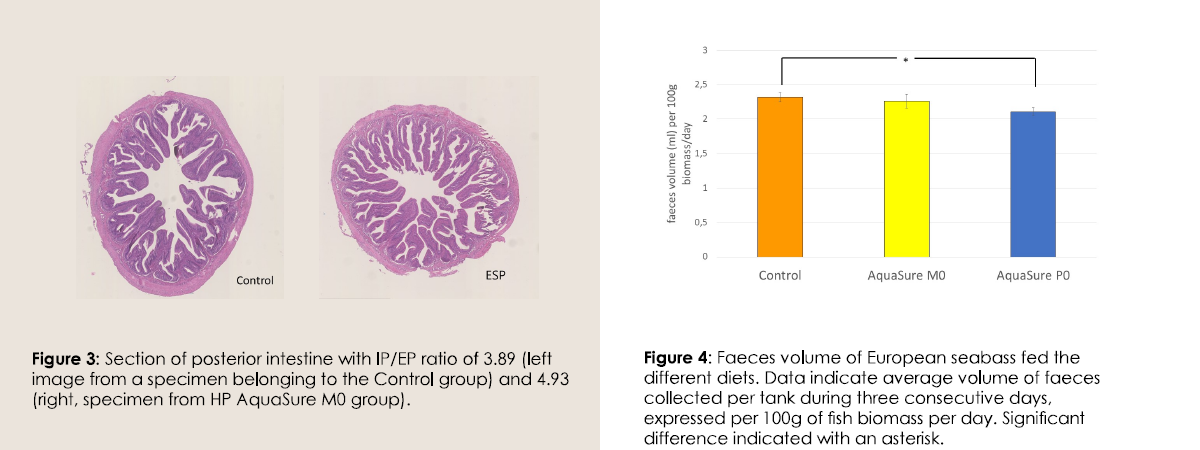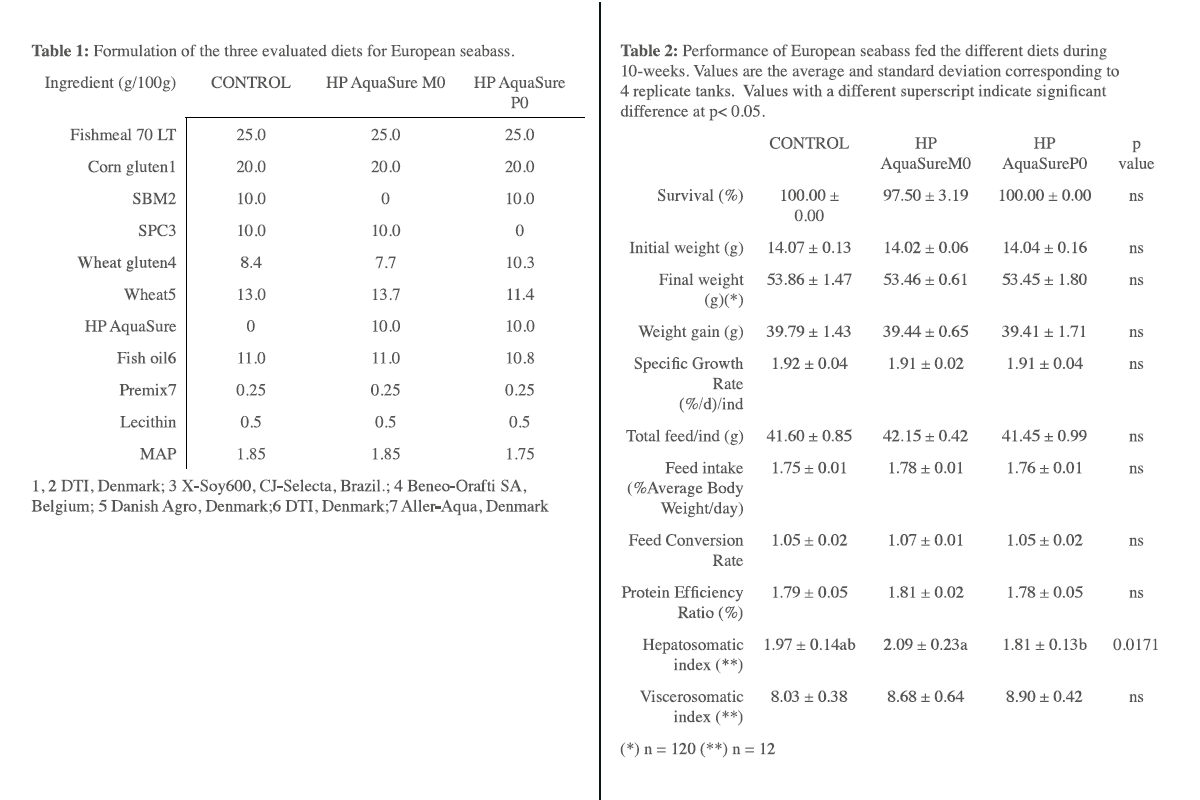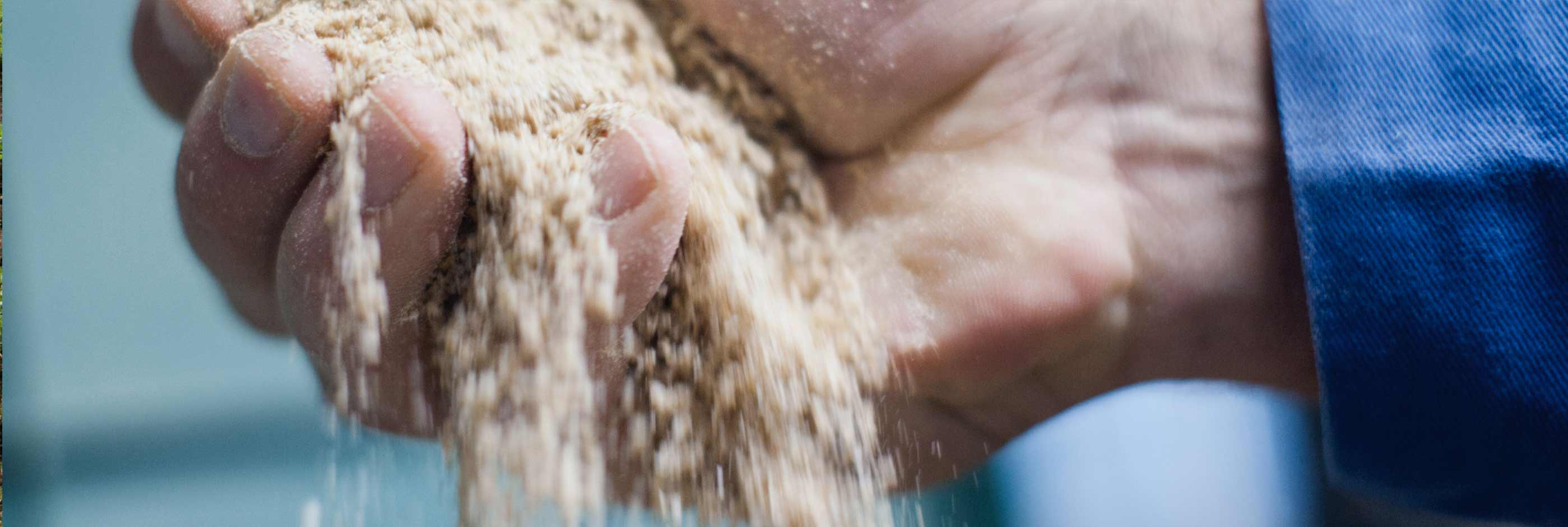Improving gut health with enzymatically processed soy protein
Article by Rocio Robles, Laura Bermudez, Testing Blue SL, Spain
& Hamlet Protein A/S, Denmark. Published in Aquafeed Sept. 2021
With aquaculture production projected to reach 109 million tonnes in 2030, the aquafeed industry is hungry for protein.
The need for high quality protein is increasing, particularly to feed high-value speciessuch as shrimp, marine fish and salmonids. This trend is expected to be further accelerated with population growth combined with the "rise of the middle class" and increased affluence (mainly in China and southeast Asia), all resulting in a shift to diets that incorporate an increasing proportion of protein from higher value animal sources.
Traditional protein ingredients such as fishmeal and soybean are increasingly under pressure due to availability and sustainability issues. The search for alternative protein sources of high quality is on and supported by decades of academic and private research in aquaculture nutrition around the globe. The first industrial projects to produce tens-of-thousands of metric tonnes of novel protein sources, including insect protein and single-cell protein, are expected to start up in the coming years.
Although promising in terms of sustainability, these novel ingredients will require time and significant funding to reach a scale large enough to impact global protein supplies. Meanwhile, the optimisation of traditional protein ingredients may contribute to the sustainable use of protein resources by improving the protein efficiency and/or reduce the negative impact on fish performance and health of anti-nutritional factors (ANF), traditionally present in vegetable ingredients.
Increasing the efficiency of soybean use in fish diets
Bioprocessing, fermentation or enzymatic treatment are some of the processes developed to increase the utilisation efficiency of soybean in fish. Enzymatic hydrolysis decreases the content of ANFs and promotes nutrient utilisation.
Hamlet Protein NS is a feed ingredient company producing specialty soy protein for young animal nutrition. HP AquaSure is an enzyme-treated soy protein produced from dehulled and fatextracted soybean meal. The unique processing method reduces the content of the ANFs with emphasis on trypsin inhibitors and the antigen j3-conglycinin, known to cause adverse effects on animal health and performance. HP AquaSure has an average crude protein content of 52 percent and the typical contents of ANFs are two mg/g trypsin inhibitor activity (TIA) and 103 ppm j3-conglycinin. This study reports on the evaluation of HP AquaSure in a feeding trial for the European seabass Dicentrarchus labrax. The trial bas been carried out at the facilities of Testing Blue S.L. (Cadiz, Spain). HP AquaSure has been tested at 10 percent inclusion level in two formulations: HP AquaSure MO and HP AquaSure PO; in the first case HP AquaSure replaced soybean meal (SBM) in the formula and in the case of HP AquaSure PO, soy protein concentrate (SPC) was replaced. Both diets were evaluated against a Control diet including SBM and SPC. The formulations were made according to the current practice of using a mixture of vegetable protein sources in fish feeds (Table 1). Fishmeal has been included at 25 percent in all the diets.
European seabass fingerlings of?.30±0.08 g average individual body weight were stocked in a RAS (recirculating aquaculture system) equipped with 12 units of 150 litre-tank and the appropriate solid separation system and water treatment and biofiltration, Each diet bas been tested in four replicate tanks, with the trial lasting 12 weeks.
No issues related to palatability were found during the trial. Feed intake was very similar for the three diets. Production results (Figure 1, Table 2), namely specific growth rate (SGR) and feed conversion rate (FCR) were very similar among the three diets and no significant difference was found among diets
(ANOVA p>0.05).


Replacing SBM by HP AquaSure resulted in a six percent increase in the hepatosomatic index whereas replacing SPC resulted in an eight percent lower hepatosomatic index. For each HP AquaSure diet, there was no significant difference with the Control (Table 2).
Histopathological evaluation indicates improved intestinal health
The study included the histopathological evaluation of the complete intestine (anterior and posterior region) and the evaluation of three oxidative stress biomarkers in the intestinal tissue: lipid peroxidation (LPO), catalase (CAT) and the ratio reduced glutathione/oxidised glutathione (GSH:GSSG) as indication of the oxidative stress (lower ratio indicates lower oxidative stress). No significant difference among diets was found for any of the three oxidative stress biomarkers.
For this trial, two histological assessments have been carried out: 1) a semiquantitative histopathological index and 2) the ratio of internal/external perimeter (IP/EP) of the intestine as an indication of available absorption surface.
The semiquantitative histopathological index was calculated using a score system that evaluated six epithelium conditions: mucosa infiltrate; lamina propria infiltrate; lamina propria increased thickness; intraepithelial degenerated forms; submucosa mixed infiltrate and submucosa congestion.
These six conditions have been graded according to a scoring method based on the incidence of the condition: 0= not affected, 1 = mild incidence, 2 = moderate incidence and 3 = marked incidence. A global score has been calculated for all the diets and the results are shown in Figure 2.
The global score is the summatory score for all assessed conditions (maximum incidence score would be 18). As it is shown in Figure 2, the global intestinal score is lower (better condition) in HP AquaSure diets than in the Control diet for both intestinal regions.
In the case of the histopathological evaluation of the intestinal epithelium, HP AquaSure sustains a better condition in the intestines of the seabass fed HP AquaSure products compared with the Control diet. This finding is highly relevant as it indicates that the enzymatic treatment of the soya shows an improved intestinal health in European seabass fingerlings.
Higher amount of viii
Within the histological findings in the trial, an increase in the ratio internal/external perimeter (IP/EP) of the intestine has been found in the seabass fingerlings fed HP AquaSure diets.
As it can be observed in Figure 3, the amount of villi in the transversal section of the posterior intestine is higher in the fish receiving HP AquaSure diets.
The ratio IP/EP for the HP AquaSure MO and PO were seven percent and two percent higher than the IP/EP ratio for the Control diet. This result together with the global intestinal index result indicate a healthier intestinal epithelium and greater surface area for nutrient absorption in sea bass fed the HP AquaSure diets probably leading to improved nutrient utilisation efficiency.
Another remarkable finding of the trial was the significantly reduced volume (p< 0.00032) of faeces produced by the HP AquaSure PO diet compared with the Control diet. HP AquaSure MO and PO had a 2.6 and nine percent lower faeces production than the Control (Figure 4). This result points to the potential advantage of using feeds including HP AquaSure to reduce the amount of solid waste in RAS.
A significant reduction in faeces volume
The main conclusions of this study indicated that the inclusion of HP AquaSure product at 10 percent of the diet for European seabass did not affect palatability, which was equivalent to the Control diet containing the same level of SPC or SBM.
Growth and FCR was not affected by the replacement of 10% of SBM or SPC by 10% of HP AquaSure. The hepatosomatic index was reduced in 8% by replacing 10% of SPC by HP AquaSure.
Furthermore, histological results showed an improved intestinal score and the ratio IP/EP of the posterior intestine in the fish fed diets including HP AquaSure, indicating a better gut health and condition of the intestinal epithelium.
The incorporation of HP AquaSure instead of SPC significantly reduced ( with 9%) the faeces volume in European seabass, confirming a reduction of the anti-nutritional effects from soybean protein.


